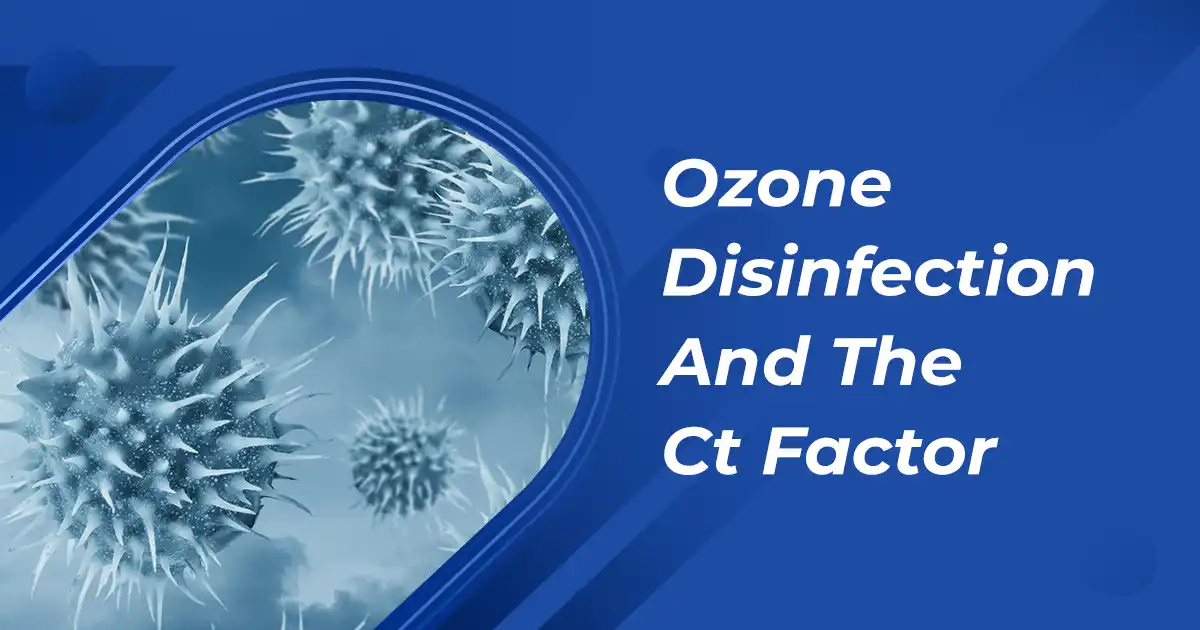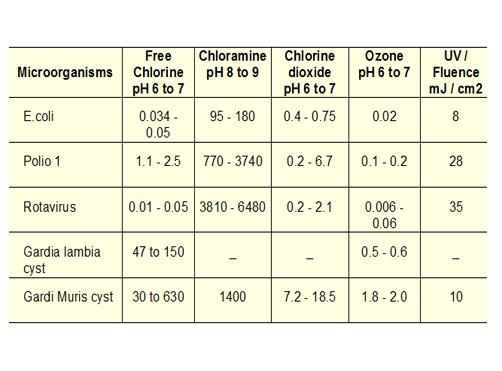Ozone Disinfection And The Ct Factor

Ozone is the most powerful commercially available oxidant which makes it widely used in disinfection of drinking water and process water. Apart from being effective against gram-positive and gram-negative bacteria like pseudomonas, and viruses like Covid 19, it can also be used for taste improvement, color removal, TOC, and COD reduction. In wastewater, Ozone is widely used for COD reduction, color, and odor removal. Ozone is produced from air/oxygen through corona discharge or from water through electrolysis. Once Ozone is generated it is mixed with water to achieve the correct CT factor needed for disinfection or Oxidation to be completed.
When you go to the doctor, he prescribes an antibiotic and gives you advice to take the medicine say 500 mg of an antibiotic, twice a day and before food . What does it mean?
Each antibiotic requires to achieve a mic (minimum inhibitory concentration) in the blood and each bacteria has different mic and this mic will differ from antibiotic to anti biotic. When antibiotic is consumed, it dissolves in the human gut and is absorbed into the blood. The antibiotic levels will rise in the blood and the minimum level has to be achieved for the bacteria to get killed. Also it has to remain in the blood for sufficiently long periods ( contact time) and hence you consume antibiotic at regular prescribed levels . Food often interferes with absorption of the antibiotic into the blood and hence some antibiotics if consumed after food may not be absorbed well enough to achieve the mic. The same analogy will apply to ozone disinfection, but how many installations are designed to consider these factors?
Analogy of mic in human beings, in water treatment is the ct factor. The ct factor is the product of dissolved ozone levels in water and the contact time. Each bacteria/virus/uni-cellular organisms have a certain ct factor and this has to be considered in designing an ozone system. That means, the applied ozone must achieve the required residual ozone in water, and the required contact time designed to achieve the ct factor. Achieving residual ozone will depend on the correct applied ozone, temperature of water, the pH of water and above all the way ozone is introduced into the water. If mass transfer factors are neglected, sure, you will not achieve sufficient ozone residual in the water
Ct factor is a simplification of Chick and Watson ’s model describing the inactivation of microorganisms versus disinfectant concentration and contact time.
Log Nt = – A * Cn * t
No
No = initial number of microorganisms
Nt = number of microorganisms at time t
A = specific lethal coefficient specific to each microorganism
C = concentration of disinfectant
t = time during which the concentration of disinfectant is maintained constant
n = constant called coefficient of dilution
CT values for different disinfectants
 How will you calculate the applied ozone dose?
How will you calculate the applied ozone dose?
Step 1 : Determine the established ct factor
Step 2: determine the ozone residual you plan to achieve in the water
Step 3: design the contact time suitable
Step 4 : Check to ensure you achieve the ct factor
For example the ct factor adopted by the packaged water industry for ozone is 1.6 . This means that if you have residual ozone of 0.2 ppm, you need 8 minutes contact time. If you achieve a residual ozone of 0.3 ppm, you need a contact time of at least 6 minutes to achieve a ct of 1.8 , higher than the required ct of 1.6
AOD (g/h) = (Ozone Demand + (Ct ÷contact time) (g/l)) X Flow Rate (l/h) ÷Ozone Transfer Efficiency (%) Where AOD is applied ozone dosage , ct is ct factor , and ozone transfer efficiency is the transfer efficiency guaranteed by the mass transfer device
Questions you should ask to determine the applied ozone dose:
- Is my ozone enough to achieve this residual ozone in water
- Have I considered the following factors : a) quality of water b) temperature c) pH
- Have I considered the right way to inject ozone in the water?
You will thus note that dissolving the ozone in water becomes very crucial as only this will determine whether you achieve the residual ozone or not.
Present practises a disaster in waiting
Most of the packaged water plants use ozone now , Many packaged water plants have shown little respect to ozone kinetics , either due to their ignorance or the ignorance of the technology provider . In many installations the ozone is introduced directly into the final filling tank which means 1) you do not have a proper method of ozone mass transfer 2) you do not know if you will achieve the required residual ozone. 3) You do not achieve the CT factor
Good manufacturing practises along can result in a good product. GMP for packaged water for final ozonation will have to include the following
- A good ozone system and mass transfer device. Mass transfer devices must have established performance curves indication mass transfer efficiencies
- Measurement of ozone residual in the tank . A good dissolved ozone analyser
- Control system to ensure the CT factor is achieved before packing
- Vent ozone destruction to adopt international ozone safety norms
- Ambient ozone sensor in the plant room for safety
- Follow accepted CIP procedures regularly


